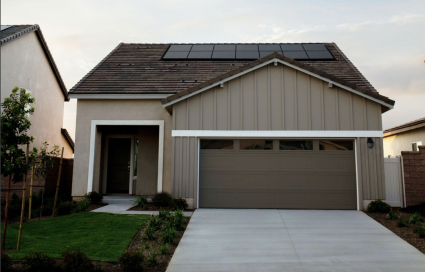Submitted electronically
|
The Honorable Michael S. Regan |
Re: Docket ID No. EPA‐HQ‐OA‐2022‐0859
Dear Administrator Regan:
Thank you for the opportunity to comment on the program design and implementation of the Greenhouse Gas Reduction Fund (GGRF).
The Milken Institute is a nonprofit, nonpartisan think tank focused on accelerating measurable progress on the path to a meaningful life. With a focus on financial, physical, mental, and environmental health, we bring together the best ideas and innovative resourcing to develop blueprints for tackling some of our most critical global issues.
We are writing to offer three recommendations regarding the development of evaluation criteria for applicants to the planned Greenhouse Gas Reduction Fund competition under Section 134. These recommendations are designed to ensure that under‐served communities and diverse regions are able to access funding and benefit from this wise, new investment in energy‐efficient and climate‐smart community infrastructure projects.
Substantial evidence exists that a persistent difficulty faced by many state and federal lending programs is that under‐served communities often lack the resources needed to even develop loan‐worthy applications and projects and access affordable project financing resources.[1] In 2021, many groups came together to highlight the need for catalytic predevelopment funding to overcome this critical funding gap. Past studies by EPA’s Brownfields program and the U.S. Economic Development Administration also show that so‐ called predevelopment funding to de‐risk projects and develop loan‐worthy project applications pays back $16‐20 per $1 invested.
To ensure that this project pipeline problem is addressed, we urge the EPA to require that every winning application demonstrates the capacity to offer technical assistance grants or sub‐grants to under‐served communities as follows by:
-
Outlining a specific plan to create a shared services center and lending network with sufficient national capacity, and local, state, and regional implementation partners, who can carry out both project lending and grant‐making to under‐served communities that enable these communities to access these new loan sources.
-
Demonstrating the capability, commitment, and proposed grant eligibility criteria to provide $250,000 predevelopment grants to 10,000 communities (totaling $2.5 billion) over the grant period, exclusive of administrative costs.
-
Specifying the capability to advance deployment of at least three different types of highly‐ replicable greenhouse gas emission reduction projects to reduce green gas reductions in the built environment, including energy efficiency investments, that reduce household energy burdens in under‐served communities.
Simply adding to the capital base of lending institutions without explicit commitments to do direct grant‐ making to under‐served rural and urban communities would, in our view, fail to ensure that GGRF funding is fully leveraged.
We are aware that leading philanthropic investors and leaders in community development and environmental justice have raised similar concerns and outlined options for consideration. We welcome the chance to work collaboratively to find solutions that address the multiple objectives and policy commitments articulated by the President, including the Justice 40 pledge.
Thank you for your consideration. We are happy to offer further detailed suggestions.
Sincerely,
Dan Carol
Senior Director, Climate Resilient Infrastructure Initiative
Milken Institute
CC:
Kerry O’Neill
Chairperson, EFAB
United States Environmental Protection Agency
















